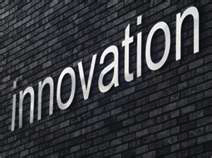Small Business
How Empathy Drives Innovation
Tact, it is often said, is the ability to make a point without making an enemy. It can also be said that the best idea in the world is little more than a single raindrop on the plain of the marketplace if someone doesn’t have the interpersonal skills ...
Sep. 12, 2016

From the University of Michigan’s Ross School of Business blog.
Tact, it is often said, is the ability to make a point without making an enemy. It can also be said that the best idea in the world is little more than a single raindrop on the plain of the marketplace if someone doesn’t have the interpersonal skills to get others to engage in the idea to improve it and ultimately adopt it. These principles are never so much on display as they are in the workplace.
With the heavy, and often necessary, focus on analytical processes and data in organizations there’s often not enough thought given to the critical human interactions that can make or break the development of innovative ideas, says Michigan Ross Professor Jeffrey Sanchez-Burks.
Empathy is the undervalued stock of innovation because people tend to leave their emotions at the door when they come to work.
Sanchez-Burks brings his expertise in deploying empathy and emotional intelligence at work to a new Ross Executive Education Program, Creating Impact Through Innovation. Taught with fellow Ross colleagues, John Branch and Marcus Collins, the program aims to accelerate people’s success in leading teams to generate, develop, and implement innovation within their organization and for external customers.
Companies have an inherent interest in promoting strategic empathy at work because relying on interviews and surveys doesn’t yield enough new insight about unmet needs and opportunities, says Sanchez-Burks. It’s more about paying attention to the verbal and nonverbal cues of the people around you — co-workers, partners, customers, and higher-ups — than becoming “touchy-feely.”
“Empathy means taking in the perspectives of others and paying attention to what they say and don’t say,” he says. “When you learn how to do this in a systematic way you become much more effective at knowing how to develop the ideas you have.”
Sanchez-Burks discovered the significance of empathy at work when he studied why people who have similar business interests often have problems collaborating. It turned out that the culture of professionalism has taught us to practically shut off our emotional radar when we come to work.
“That was a very important discovery,” he says. “It suggests we don’t need to equip people with new capabilities, but rather help people use the skills they have and frequently use outside the workplace.”
The new program uses an experience-driven learning process, putting participants in real-life scenarios, learning how to be strategic in identifying opportunities for innovation, leading teams to develop solutions, and preparing those ideas so that they are more readily adopted. The program culminates with an action plan for each participant to immediately apply core lessons in their organizations.
“I think we’re seeing a wonderful renaissance in human-centric design because organizations are starting to understand it’s not a big investment in technology that we need to drive innovation,” says Sanchez-Burks. “It’s people and their talents. And we can enhance their ability to collaborate more effectively. That’s what innovation is all about.”
